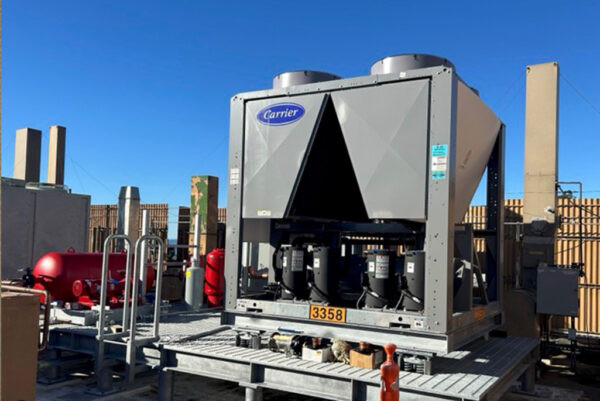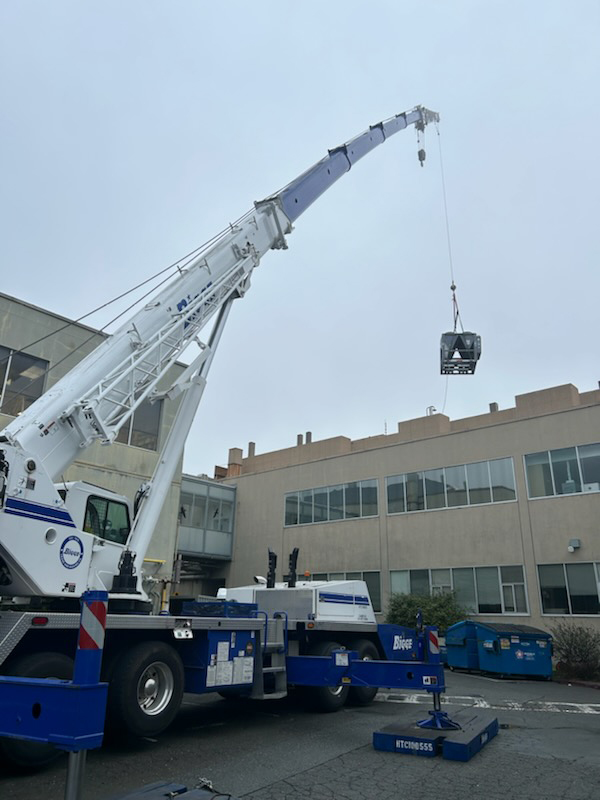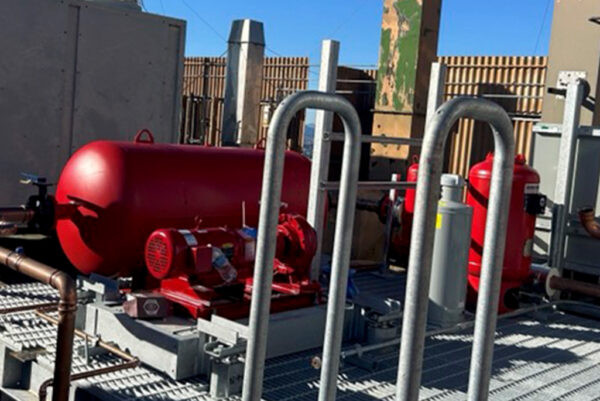Chiller system overhaul preps Berkeley Lab’s Micro Systems Lab for the next decade
Chiller system overhaul preps Berkeley Lab's
Micro Systems Lab for the next decade
5 December 2024

The new chiller system, fully installed on top of Building 70A, November 2024. Photo: Courtesy of the PIM Division.
As part of a long-awaited infrastructure modernization project in support of Berkeley Lab's Micro Systems Lab (MSL), a new chiller system was delivered and installed on the top of Berkeley Lab's Building 70A on November 23. The new chiller system replaced an older system (with over 25 years in service) to extend this critical facility's useful life.
The updated cooling system – consisting of a chiller unit and its corresponding pump system and equipment controls – was identified in the 2021 MicroSystem's Laboratory Task Force Report as being among the highest priorities for replacement and a requirement to keep the facility running. With significant support from the Project Infrastructure and Modernization (PIM) Division, Berkeley Lab plans to continue making significant investments in additional modernization efforts going forward.

The new chiller being hoisted to the top of Building 70A.
Photo: Courtesy of the PIM Division.
Berkeley Lab's Micro Systems Lab is a unique U.S. Department of Energy (DOE) technical facility with a specialized class 10 cleanroom for semiconductor and superconductor device fabrication. Managed by the Physics Division, it specializes in fabricating various types of radiation detectors and integrated electronics on high-resistivity silicon. Its processing capabilities include high-temperature oxidation, deposition of thin films, diffusion of impurity dopants, dry plasma etching, wet chemical etching and cleaning operations, and photolithography.
Over the next ten years, MSL is poised to play pivotal roles in DOE High Energy Physics (HEP) research efforts by improving CCDs for dark matter detection and “Physics Beyond the Standard Model” neutrino imaging, developing germanium CCDs for dark energy detection, wide-bandgap semiconductors for future vertex detectors at collider experiments, and novel thin-film sensors for Cosmic Microwave Background detection and low-mass dark matter searches. The MSL also supports multi-programmatic research for the National Aeronautics and Space Administration (NASA) and the European Space Agency (ESA), as well as DOE’s Nuclear Physics Program and National Nuclear Security Administration (NNSA).
